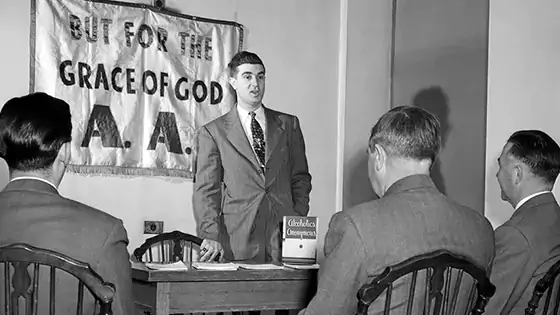
Alcoholics Anonymous History In A Nutshell
Alcoholics Anonymous (AA) is a worldwide fellowship of men and women who share their experiences, strength, and hope with each other to overcome their addiction to alcohol. Here are ten significant milestones in the history of Alcoholics Anonymous:
- Founding of Alcoholics Anonymous: Alcoholics Anonymous was founded in 1935 by Bill Wilson and Dr. Bob Smith in Akron, Ohio. The two men had struggled with alcoholism and discovered that talking to each other and sharing their experiences helped them stay sober.
- Publication of “The Big Book” (#ad): In 1939, Alcoholics Anonymous published “Alcoholics Anonymous: The Story of How Many Thousands of Men and Women Have Recovered from Alcoholism,” also known as “The Big Book.” The book outlines the principles of the AA program and includes personal stories of recovery.
- Formation of AA groups: By 1941, AA had grown to over 100 groups in the United States and Canada. The organization continued to expand, with groups forming in other countries, including the United Kingdom and Australia.
- Adoption of the 12 Steps: The 12 Steps are the cornerstone of the AA program. The steps were first published in “The Big Book” and provide a framework for personal recovery from alcoholism.
- Creation of the AA Grapevine: In 1944, AA published the first issue of the AA Grapevine, a monthly magazine written by and for AA members. The magazine has since become an important tool for communication within the AA community.
- Establishment of the General Service Office: In 1951, AA established the General Service Office (GSO) in New York City to provide support and guidance to AA groups around the world.
- Acceptance of the Third Tradition: The Third Tradition states that “the only requirement for AA membership is a desire to stop drinking.” This tradition was formally adopted by AA in 1955.
- Creation of the AA 24-hour chip: The AA 24-hour chip (#ad), also known as the “desire chip,” is a small token given to new AA members to signify their commitment to sobriety. The chip was first introduced in the 1960s.
- Introduction of the AA Big Book in Braille: In 1966, AA published the Big Book in Braille, making the program accessible to blind and visually impaired individuals.
- Growth of AA membership: Today, there are over two million members of Alcoholics Anonymous in over 180 countries around the world. AA continues to be a vital resource for individuals seeking to overcome their addiction to alcohol and achieve lasting sobriety.
These ten milestones represent key moments in the history of Alcoholics Anonymous. Through the dedication and commitment of its members, AA has helped millions of individuals overcome their addiction and build fulfilling lives in sobriety.